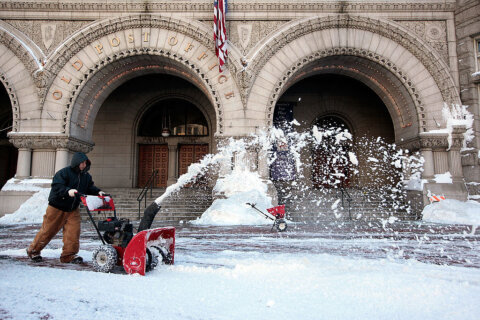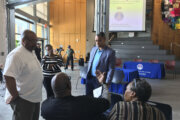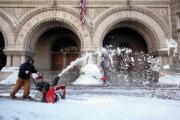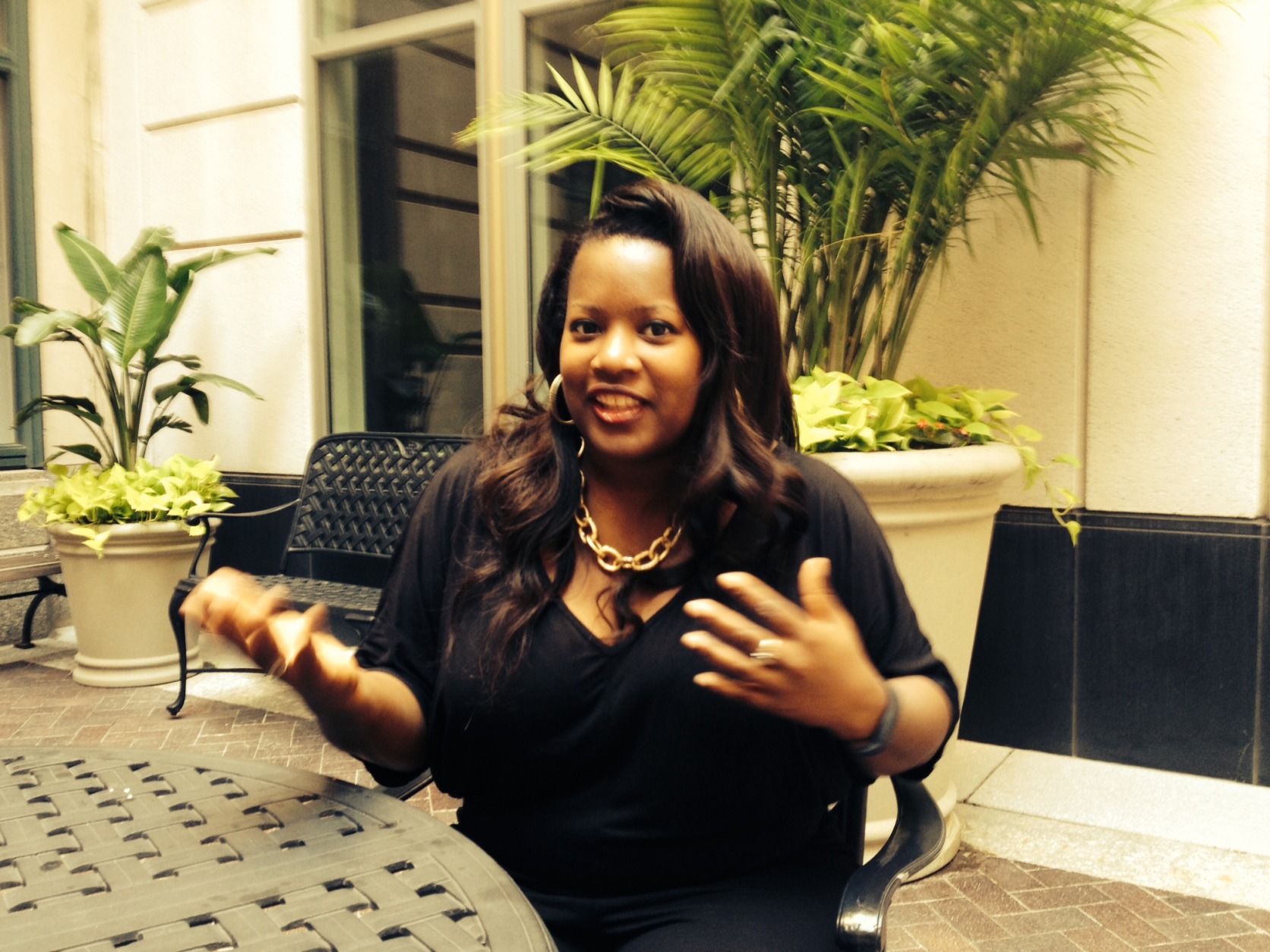
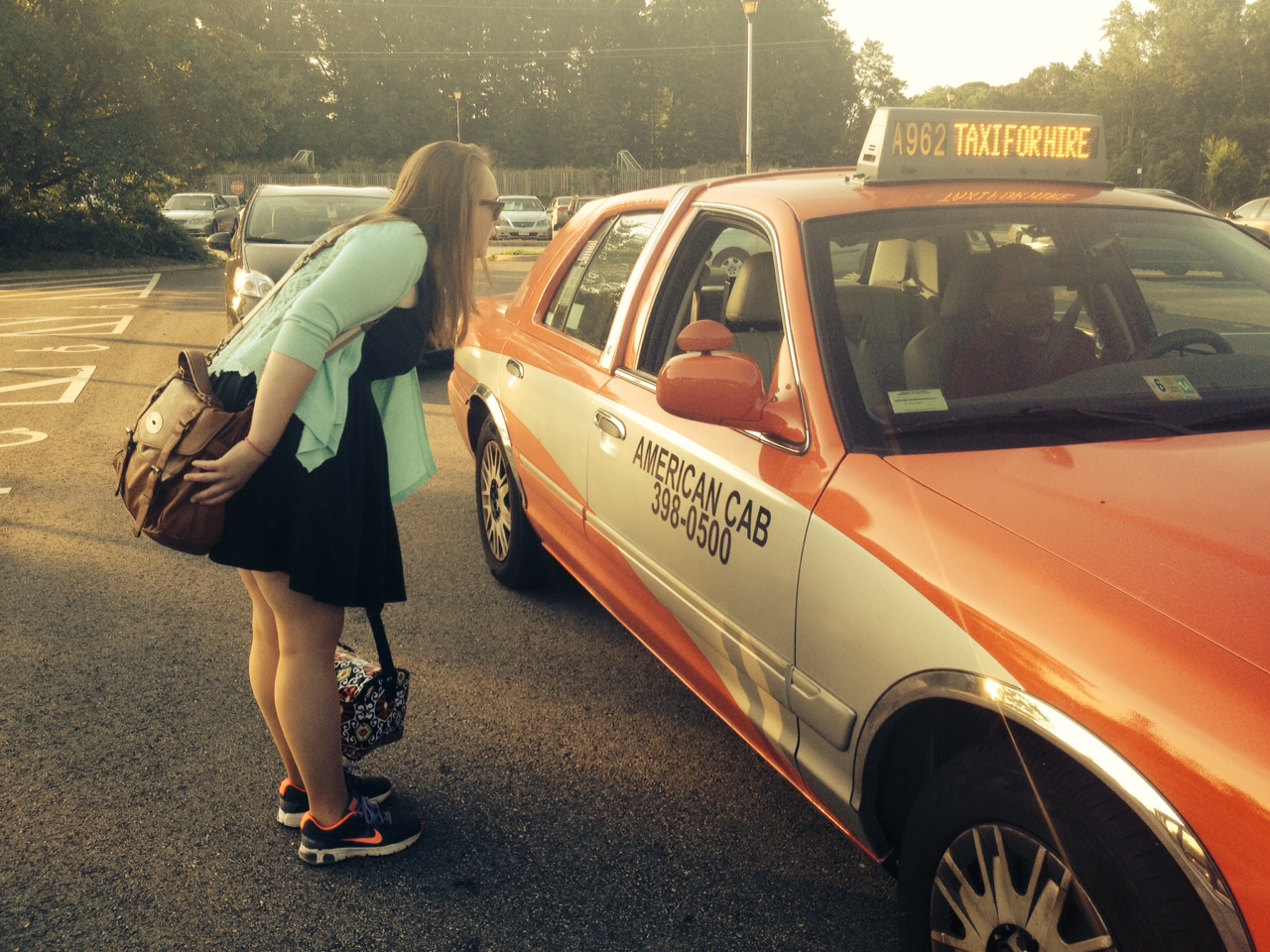
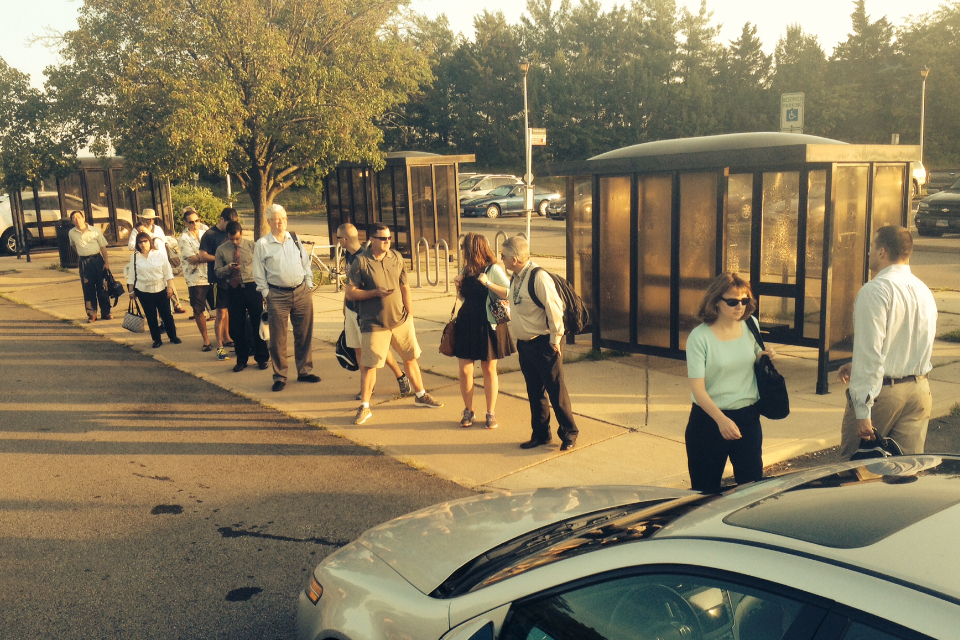
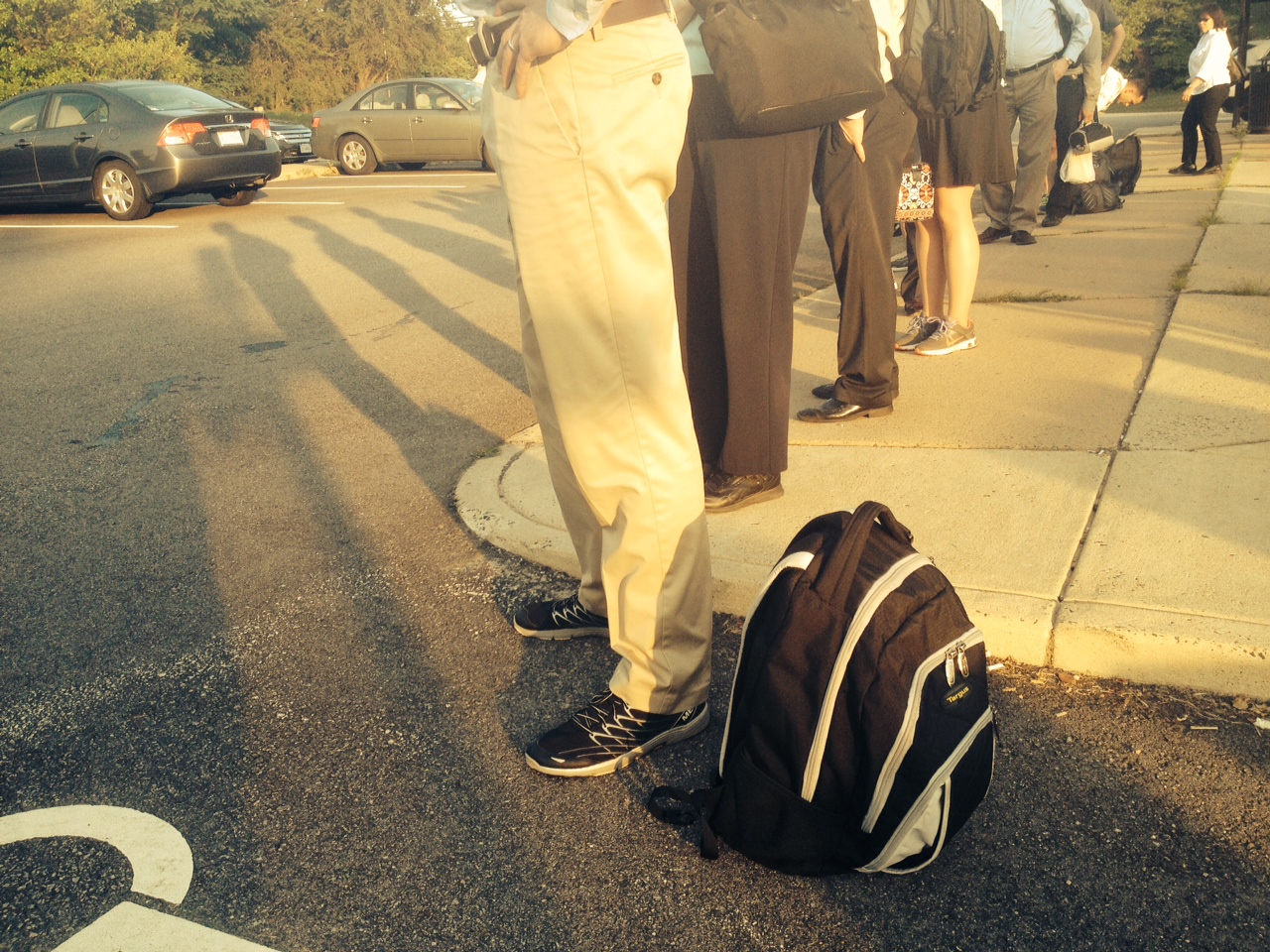
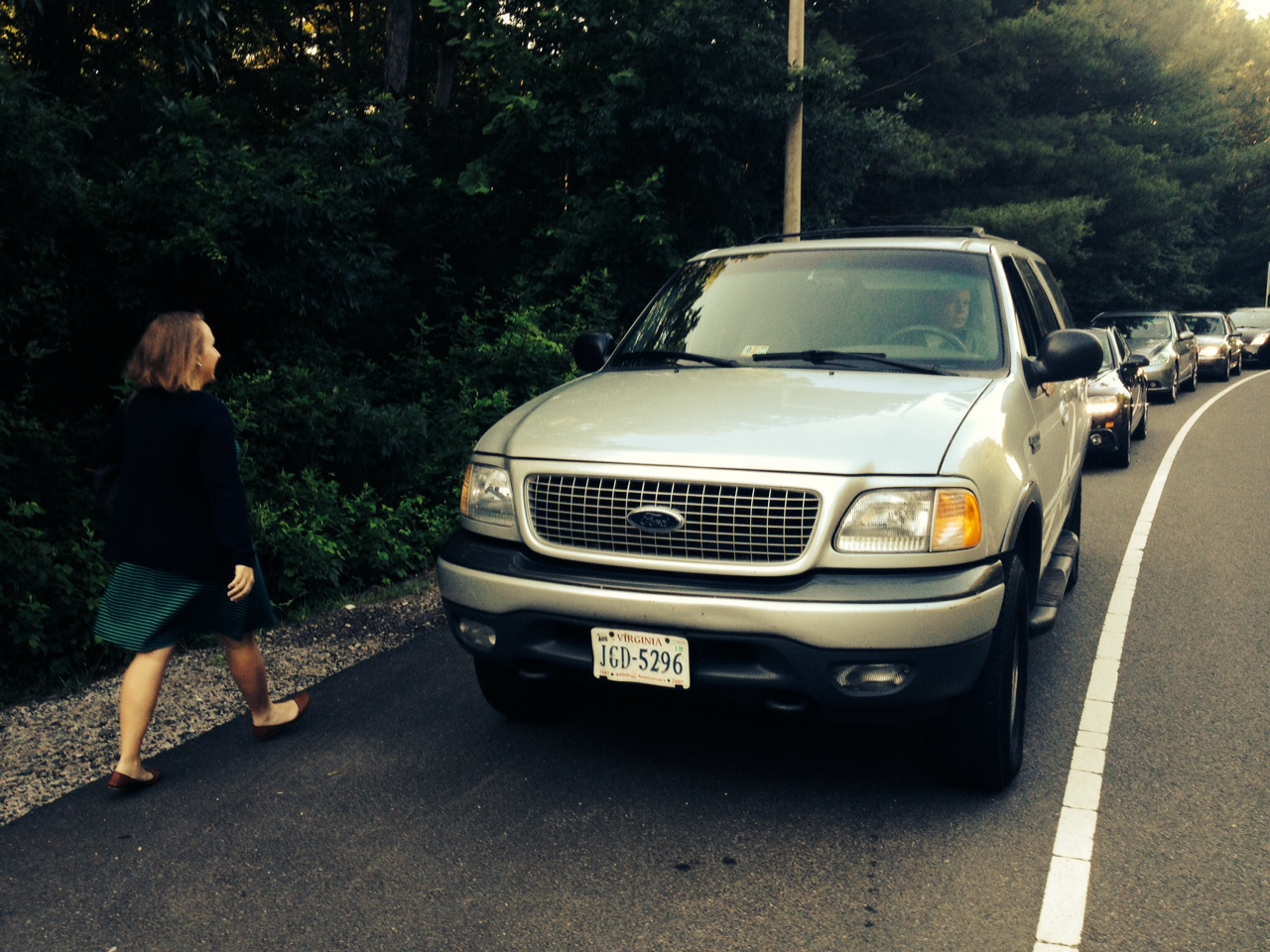
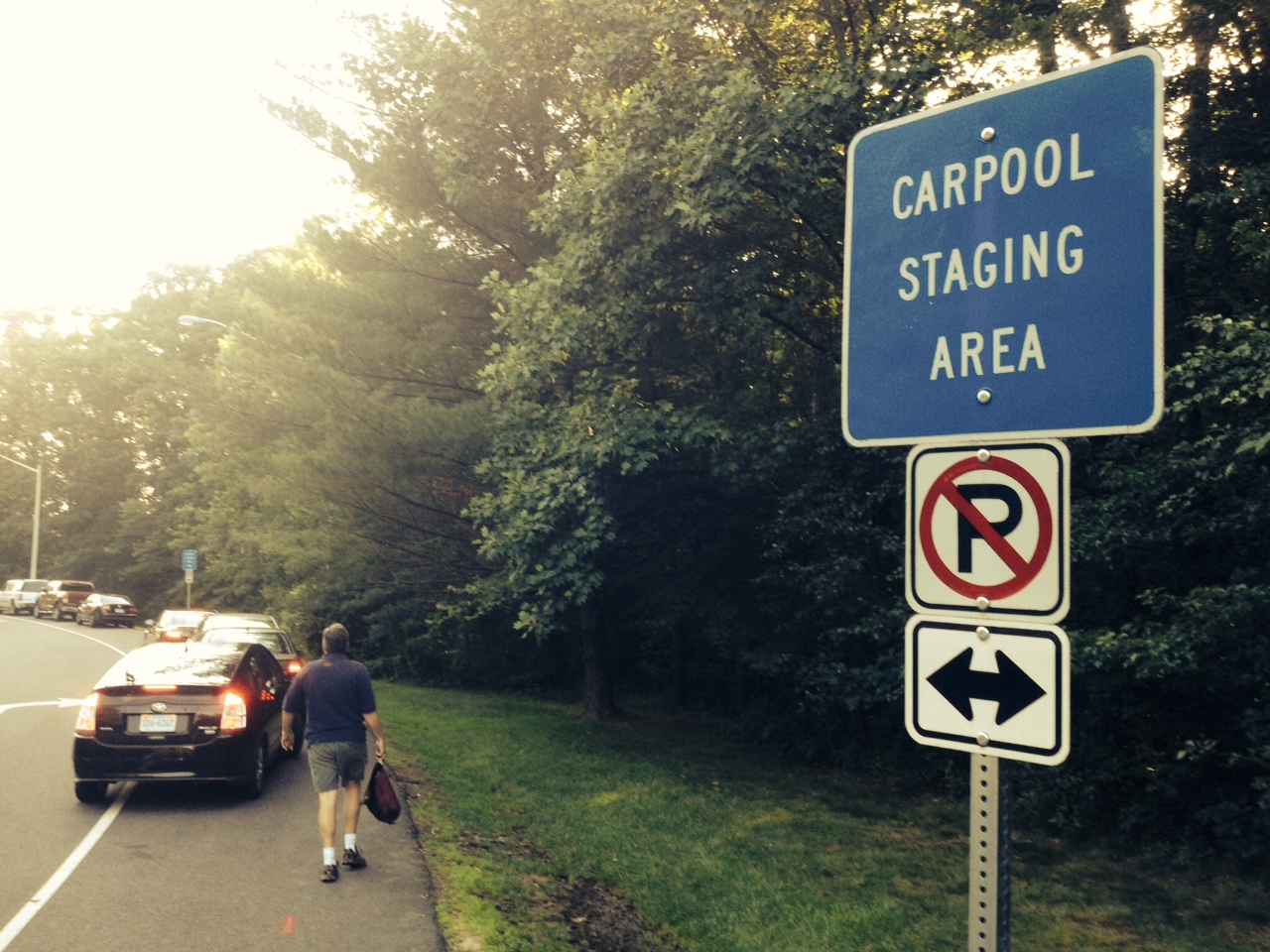
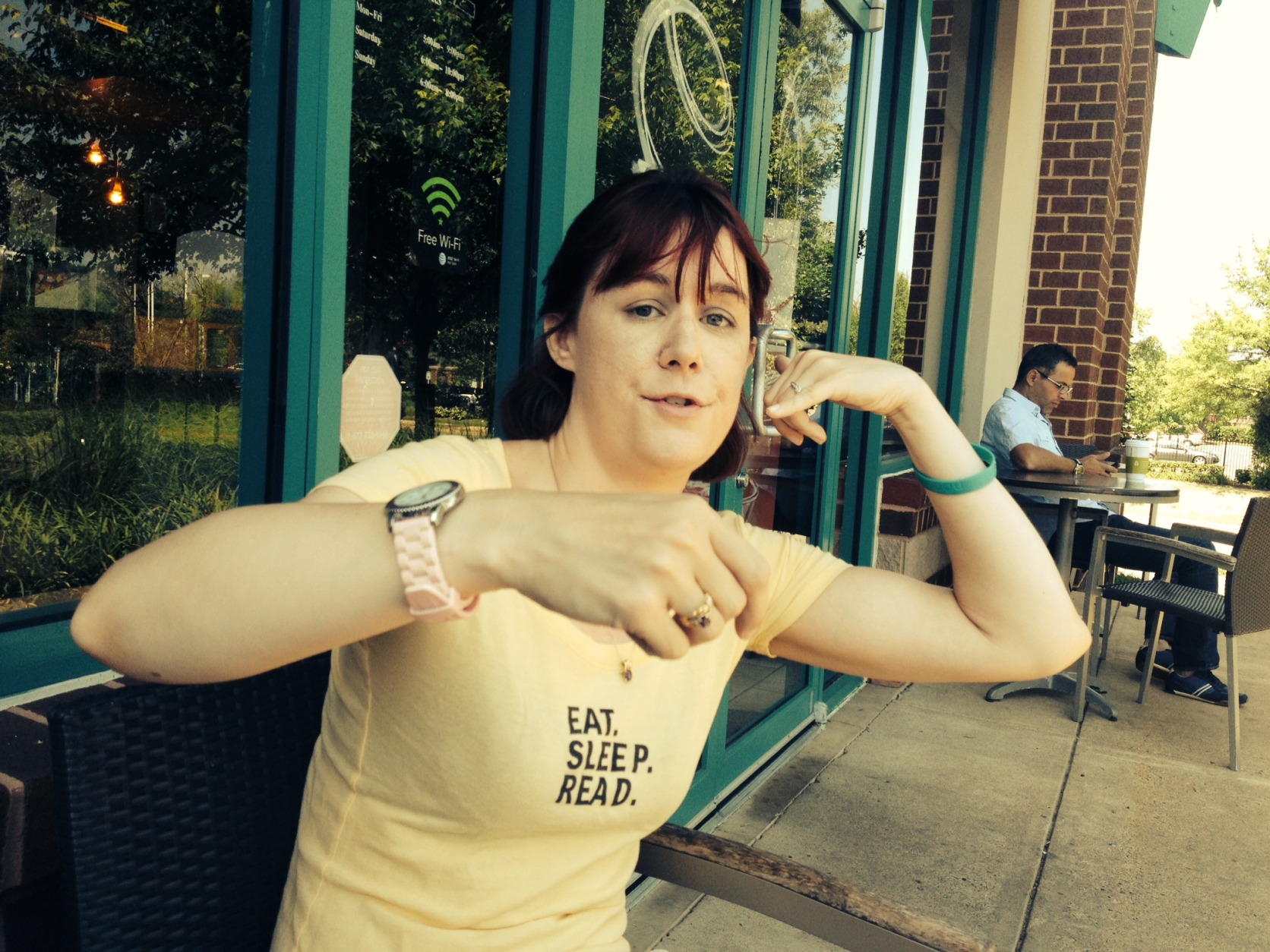

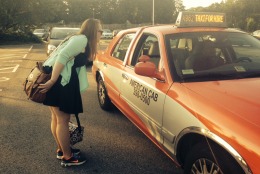
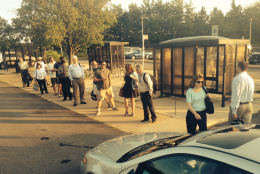
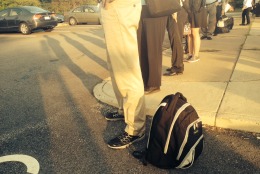
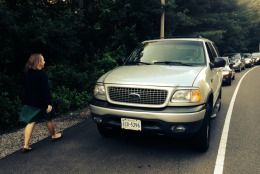
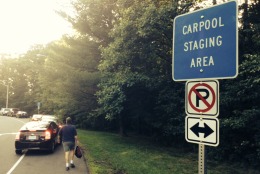

WASHINGTON — Brittne Nelson is a senior researcher at AARP — and a slug.
“You’d be amazed what you have to do to survive in this area. That’s what I have to do to get around,” Nelson says.
If you’ve never heard of the term, you’re probably shaking your head at this point. But slugging — commuting via an organized hitchhiking system — is popular in the D.C. region, even though some people might find it odd.
The idea is to get passengers and drivers to work faster using High Occupancy Vehicle (HOV) lanes. “Slugs” wait at a designated spot and grab a ride with drivers who need extra passengers to use the HOV lanes.
The idea of a daily commute that involves sharing a car with strangers “I think is incredibly creepy,” says Margie, of Gaithersburg, Maryland. “I’m not getting into a stranger’s car. You don’t know the creeps that are out there.”
“I don’t think I would do it — but if it works for some people, I’m all for it,” says Aileen Shaffer, of Bethesda. Shaffer says she “loves the HOV lanes when I have enough people” to use them.
People choosing to slug find it gets them to work quicker than driving solo or using public transportation. There’s also less hassle, they say. And many slugs and casual carpoolers are proud to be part of a grassroots effort consisting of people helping people in such an independent way.
The trend has popped up in some other U.S. metro areas, but it’s rare. In San Francisco, the same method is called “casual carpooling.” Houston, like D.C., uses “slugging.”
“It’s convenient. It’s free. There’s no money exchanged between the drivers and the riders and it works for my schedule,” says Nelson, who slugs from Woodbridge, Virginia, to the Pentagon, then takes Metrorail into downtown D.C.
After Heather Maki began slugging to work, her journey from Burke to Rosslyn became a reliable 20 minutes, compared to an unpredictable journey of “an hour to an hour and a half taking bus and Metrorail — depending on traffic and delays on the Blue Line, which were almost every day,” she says.
Slugs in D.C.
␎ 
Slugs listen for destinations to be called out at a Springfield/Burke slug lot in Virginia. This particular lot has multiple destinations: Pentagon; Foggy Bottom at the Metro station between 23rd and I Street; 20th Street & L; Crystal City; 14th and Constitution; L’Enfant Plaza; 18th Street; and Rosslyn near the Key Bridge. (WTOP/Kristi King)
Drivers wanting to use HOV lanes to access destinations in or close to D.C. collect slugs who wait in line for rides. Passengers are dropped off at designated areas. The process is repeated in reverse to get home.
The D.C. metro region consistently ranks near the top of national lists of areas with the worst traffic.
“In 1980 we had two rush hours a day and each rush hour was two hours long. Today the rush hour begins for many before four o’clock in the morning and ends sometime after eight or nine o’clock” at night, says veteran WTOP Traffic Reporter Bob Marbourg.
Referring specifically to the area’s Commuter Connections program, which offers resources and support to formal carpools, Marbourg adds, “Everything that enables people to get to work on time, to keep their appointments and to get home before daycare kicks into overtime is a good thing.”
Slugs in the San Francisco Bay Area
Slugging is also popular in the San Francisco Bay Area, which has the world’s third-busiest rush hour, according to that region’s Metropolitan Transportation Commission.
“We call the gatherings casual carpool,” says Matthew Smyth, who lives in Lafayette, California, a suburb of San Francisco. “Because it is carpooling on the bridge, which is one of the main advantages, and it is quite casual.”
The San Francisco area has more than 20 casual carpool pickup locations that all terminate downtown.
“At the bridge, we’re able to use the HOV lanes, so you get a discounted bridge toll as well as zipping through a lot faster than people using the regular toll lanes,” Smyth says. A typical toll to use the San Francisco- Oakland Bay Bridge is $6. Carpool vehicles pay $2.50.
Smyth says drivers collecting passengers at his gathering spot typically pay the toll themselves. Casual carpoolers in some San Francisco suburbs, however, might offer the driver a dollar.
The bridge used to be free for HOV.
“Really the big advantage for us is the time savings,” Smyth says referring to both casual carpool drivers and riders. A trip that might otherwise take Smyth an hour and half is cut down to about 35 minutes using casual carpool.
The benefits of slugging
␎ 
At the Daventry Subdivision slug line, located near the intersection of Old Keene Mill Road and Hunter Village Drive in Springfield, Virginia, Meagan Stokes faces an atypical situation. Driver Kurt Ettenger says driver to rider ratio is usually fairly balanced. (WTOP/Kristi King)
And slugs aren’t tied to anyone else’s schedule.
“I have a security job, so I need the flexibility,” says Kurt Ettenger, of West Springfield, Virginia, who always is the driver in the slug equation.
Ettenger used to commute by bus and Metrorail but says having his vehicle with him at work also gives him flexibility as a parent.
“My wife does international travel, so sometimes I’m only one-deep parenting; you’ve got to have availability,” he says.
Some slugs alternate between riding or driving depending on their needs on any given day.
“I tutor on Mondays during the school year, so on Mondays I drive,” says Nelson, of Woodbridge. “I do that in order to leave at six to go directly from work to the church,” she says.
Slugging in Houston
Seven percent of the D.C. metro region’s 2.4 million daily commuters use vanpools or carpools. That 7 percent includes people using slug lines.
In the Houston, Texas metro area the number of commuters who carpool/vanpool is much higher, at 11 percent to 12 percent.
But while slugging in Houston used to involve about 600 commuters, in the most recent count there were fewer than 50.
“I love the idea of slugging. It’s such an efficient way to move travelers. But, it doesn’t look good for Houston right now,” says Texas A&M professor Mark Buris.
Buris researches how drivers react to changes in price and options, and “slugging is one of those rather unique options,” he says.
Slugging numbers declined sharply in Houston after HOV requirements on the Katy Freeway lowered the minimum to reap HOV benefits from three in a car to two.
“The majority of the carpools are two people,” Buris says.
He believes HOV-2 is more popular because “it’s a lot easier to form a two-person car pool amongst people you already know.” Drivers riding with a friend, family member or co-worker don’t need to swing by a slug line commuter lot to pick up people.
A Federal Highway Administration report on slugging/casual carpooling suggests the declining popularity in Houston could also be about people’s level of discomfort being in a car with a stranger.
“Safety concerns remain a factor,” the report says.
The report’s “Summary of Lessons Learned and Analysis of Practices” also states the following:
“The scan group observed that a handful of drivers picked up more than one passenger, even though the requirement was only HOV-2, and stated that they did so because it seemed safer.”
The other slug line
A type of informal ride-sharing that’s popular in Baltimore, Maryland is less structured than slugging, works more like old-fashioned hitchhiking and demonstrates both the opportunity for grassroots-inspired success and potential for personal risk involved with individuals sharing rides with strangers.
“It’s called hacking. You can get anywhere in the city for about five bucks,” says Imani Muleyyar.
People just raise a hand at passing cars, one pulls over and then rider and driver negotiate a price that’s typically about half the price of a cab.
“But you risk your life every time, that’s the only problem,” Muleyyar says. “A friend of mine got killed. It was a father of a friend.” He says the man was shot in his car while offering to give someone a ride.
The Baltimore Police Department doesn’t track the number of crimes related to hacking. Operating as an unlicensed taxi is illegal in Baltimore.
“Our officers enforce this law by writing citations for both the driver of the unlicensed car as well as for the individual receiving the ride,” says Baltimore Police Lieutenant Sarah E. Connolly.
Stories from the slug line
␎ 
Slug pick up locations can be commuter lots, shopping center parking lots and even neighborhood roads, such as this one in the Daventry Subdivision in Springfield, Virginia.
Nelson says a driver once threatened to leave her on the side of the road. While chatting away on a cellphone, the driver “almost hit a car because she was coming up too fast and had to swerve,” Nelson says.
After giving the woman a stern look Nelson says the driver told her, “You can get out if you like. I can pull over right here and let you out.”
In one of the more infamous cases of slug-line rage, former Army Sgt. Maj. Gene McKinney spent the weekend in a local jail in November 2011 for disorderly conduct and reckless driving convictions related to an incident involving slugs.
McKinney was convicted of driving more than 90 mph in the HOV lanes of Interstate 95 after picking up two slug passengers in Occoquan on Oct. 25, 2010. The passengers asked to be let out in Crystal City, Virginia. When one of the exiting slugs was trying to document McKinney’s license plate, McKinney’s car struck the man, inflicting an apparent concussion, according to court records.
While bad behavior among informal carpoolers is low in the San Francisco area, casual carpooler Erica Terry Derryck believes there is a “social contract.”
“I think most people benefit so much from it that nobody wants to see it messed up. So, I think people are on their best behavior,” she says.
Commuters waiting in line for a ride are allowed to take a pass on an available car with no repercussions if they recognize a passenger or driver they would rather avoid.
Cellphone use by drivers and passengers is discouraged, although it happens. Slugs and casual carpoolers describe most rides as quiet, or perhaps the radio is on.
Riders seem comfortable following universally accepted protocols: Drivers get to decide on the radio station and climate control, and whether people in the car have conversations.
Encouraging carpools
Even federal officials have declared slugging is “easy and efficient.”
A 2012 Federal Highway Administration study of what it calls “organic dynamic ridesharing” in Houston, D.C. and San Francisco notes that the practice is light on infrastructure, requires little government involvement and utilizes a previously untapped resource: empty car seats.
The report concludes with a recommendation:
“With the help of the right champion (perhaps from a regional or State government or a benefactor), the scan team believes that new dynamic ridesharing systems could be engineered into existence. This topic deserves further study.”
Several metro areas provide commuters with financial incentives to quit driving solo.
Locally, the Commuter Connections Pool Rewards program pays qualifying new vanpools $200 a month. Eligible new carpool participants can earn a total of $130.
Getting cars off roads provides myriad benefits to an area with a growing population and finite resources to address transportation needs.
“There’s definitely a challenge, because there’s going to be growth in both housing and jobs within the next 20 to 30 years and the infrastructure is not keeping pace with that growth,” says Nicholas Ramfos, director of alternative commute programs at the Metropolitan Washington Council of Governments.
He says more people need to change travel behaviors, which would also help air quality.
“On bad air quality days I really appreciate slugging,” says former slugger Heather Maki of Alexandria, Virginia, who has asthma.
Maki stopped slugging when she changed addresses and it no longer was a convenient option, but says she still would slug if she could.
“Especially in the summer, during the bad air quality days, it’s really important for people to get off the roads and not add to that stuff in the air,” she says.
HOV adjustments
In early 2015, the status of Virginia I-95 HOV lanes will change. HOV lanes extending from Route 610 in Stafford County to just north of Edsall Road on I-395 in Arlington will become hybrid HOV-High Occupancy Toll(HOT) lanes.
Some slugs question whether the car-to-rider ratio will be disrupted when drivers are given the option to pay to use HOV-HOT lanes and drive solo.
“A November 2013 survey of drivers who travel I-95 shows 97 percent of current carpoolers are likely to continue carpooling on the 95 Express Lanes,” says Michael McGurk, spokesman for 95 Express Lanes operator Transurban.
I-95 Express Toll Lanes also are coming to Maryland north of Baltimore City in late fall 2014.
Those lanes will include no HOV requirements or incentives, although “carpoolers will be able to split the cost of these tolls,” says spokeswoman Joan Morrissey Ward.
Both the Virginia and Maryland Express Lanes on I-95 will use variable pricing during different times of the day to manage traffic congestion.
A typical rush-hour trip in Virginia is expected to cost between $6 and $8. Virginia 95 Express Lanes prices are expected to range from as low as 20 cents a mile during less busy times to approximately 80 cents a mile in some sections during rush hour.
When the Virginia 95 Express Lanes become active early next year, what currently are free HOV lanes in Virginia along I-95 and I-395 will become exclusively 24-hour toll lanes south of Edsall Road with the option of free HOV. In order for HOV cars to use the Virginia 95 Express Lanes with no charge, drivers will need to get an E-ZPass Flex transponder.
Nelson plans to buy an E-ZPass Flex for days she drives.
Regardless of survey results, she’s concerned the toll option will drain drivers from the slugging system.
“The buses are basically full, so I really need the slugging to get to work,” Nelson says.
On days she drives, it costs $20 for Nelson to park downtown.
The history
Commuters slug now to save time and money. But the practice originally was spawned in the mid-1970s as a response to the Mideast oil crisis: long lines, short supplies and high prices at gasoline stations, uncertainty about the future of gasoline.
The term “slug” began as a derogatory word used by bus drivers, according to the go-to resource for all things slugging: Slug-lines.com.
According to the site’s author, David LeBlanc, bus drivers trying to discern paying customers from people lining up for a HOV ride called the freebie commuters “slugs,” equating them to slug nickels that masquerade as payment.
Slugs got named as a slight. The name may prompt some people to think of slimy backyard pests. But the practice of slugging may say something about American spirit and ingenuity.
LeBlanc observes, “Where else does a system move thousands of commuters daily, without anybody in charge, that is self-regulating, and is free? Faced with a problem, the American commuter will find a solution.”
Follow @WTOP on Twitter and on the WTOP Facebook page.


